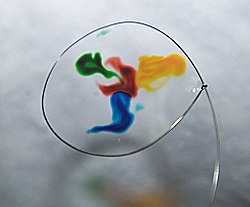 Push a cart down a supermarket aisle, and you’ll pass a kaleidoscope of color. The use of artificial dyes by foodmakers is up by half since 1990, and it’s not limited to candy. The list of foods made pretty by chemicals now includes pickles, bagels and port wine cheese balls.
Push a cart down a supermarket aisle, and you’ll pass a kaleidoscope of color. The use of artificial dyes by foodmakers is up by half since 1990, and it’s not limited to candy. The list of foods made pretty by chemicals now includes pickles, bagels and port wine cheese balls.
“Americans are really turned on by a bright-red strawberry juice, and they think it’s natural,” said Kantha Shelke, co-president of the food research firm Corvus Blue. “Or cheese — cheese is naturally a pale color, but most young kids will not eat cheese unless it’s a bright, almost fluorescent orange.”
Foodmakers have used dyes since ancient times to make food more appealing to the eye. But the practice has so invaded the modern psyche that artificial dyes are being used even on some pet foods. Dogs see limited color, but apparently their owners don’t like buying dull, gray chow.
Now, federal regulators are reexamining artificial ingredients they have long deemed to be safe, prompted by scientific studies suggesting that color additives might be linked to hyperactivity in children and other health effects. On Wednesday, an advisory panel to the Food and Drug Administration will begin a two-day meeting to discuss the science behind artificial dyes and whether the government ought to restrict their use.





 Toothpaste can be widely contaminated with lead and other dangerous heavy metals, new research shows.
Most of...
Toothpaste can be widely contaminated with lead and other dangerous heavy metals, new research shows.
Most of... CT scans diagnose afflictions from tumors to kidney stones to life-threatening diseases and injuries, such as...
CT scans diagnose afflictions from tumors to kidney stones to life-threatening diseases and injuries, such as...






























